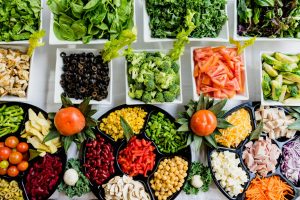Brazil’s Amazonian Cuisine: Preserving Indigenous Flavors
Brazil’s Amazon rainforest is home to an incredibly diverse ecosystem, boasting millions of species of plants and animals. However, what many people may not know is that the Amazon also plays a vital role in Brazil’s cultural and culinary heritage. The cuisine of Brazil’s Amazonian region is a unique and fascinating blend of indigenous flavors, techniques, and ingredients. As the world becomes increasingly aware of the importance of preserving biodiversity and indigenous cultures, the need to protect and promote Amazonian cuisine has never been more pressing. In this article, we will explore the rich history of Brazil’s Amazonian cuisine and the efforts being made to preserve its unique flavors for future generations.
The History of Brazil’s Amazonian Cuisine
The indigenous peoples of Brazil’s Amazon region have been using the natural resources around them to create delicious and nourishing meals for thousands of years. In fact, archaeological evidence suggests that the first humans arrived in the Amazon approximately 11,000 years ago, and have been continuously inhabiting the area ever since. This long and uninterrupted history of human habitation has given rise to a diverse and complex cuisine.
Ingredients
The primary ingredients used in Amazonian cuisine are those that can be found abundantly in the region’s rich and fertile soil. Manioc, a starchy root vegetable, is a staple in many dishes and is used to make flour, porridge, and even beer. Another popular ingredient is açaí, a type of berry that is used to make a variety of sweet and savory dishes. Freshwater fish, such as pirarucu and tambaqui, are also commonly used in traditional Amazonian recipes.
Flavors
The flavors of Amazonian cuisine are heavily influenced by the use of local ingredients and traditional preparation methods. Many dishes feature a blend of sweet and savory flavors, with earthy and smoky undertones from ingredients like manioc and smoked meats. Indigenous Amazonian cooking also makes use of a variety of herbs and spices, such as cilantro, cumin, and chili peppers, to add depth and complexity to dishes.
Preserving Indigenous Flavors
Despite the long and rich history of Amazonian cuisine, its popularity has been overshadowed by the more well-known cuisines of other Latin American countries. In addition, the rapid deforestation of the Amazon rainforest and the displacement of indigenous peoples threaten the very existence of this unique culinary tradition. However, there are efforts being made to shine a spotlight on and preserve the flavors of Amazonian cuisine.
Culinary Schools and Restaurants
One way that the flavors of Amazonian cuisine are being preserved is through the opening of culinary schools and restaurants that specialize in traditional Amazonian dishes. These establishments are not only promoting the cuisine to a wider audience but also providing job opportunities for indigenous communities and helping to sustain their way of life. Some notable culinary schools and restaurants focused on Amazonian cuisine include Senac Amapá and Remanso do Bosque in Belém.
Slow Food Movement
The Slow Food Movement, an organization dedicated to preserving traditional and regional cuisines, has also played a significant role in promoting and protecting the flavors of Amazonian cuisine. They have supported small-scale producers of traditional Amazonian ingredients and products, helping to increase their visibility and economic viability. In addition, Slow Food has also launched campaigns to educate consumers and raise awareness about the importance of preserving these unique flavors.
Indigenous Communities
Perhaps the most crucial factor in preserving the flavors of Amazonian cuisine is the active involvement of indigenous communities. These communities are the guardians of traditional cooking techniques and recipes and are essential in passing down their knowledge to future generations. By supporting and empowering these communities, we can ensure that the flavors of Amazonian cuisine continue to thrive for years to come.
Conclusion
Brazil’s Amazonian cuisine is a fascinating and important part of the nation’s rich cultural heritage. With its diverse flavors and use of local ingredients, it is a testament to the importance of preserving traditional cuisines. Through the efforts of culinary schools, restaurants, organizations like Slow Food, and indigenous communities themselves, we can ensure that these unique and delicious flavors are not lost to time. So, the next time you have a chance to try Amazonian cuisine, remember the rich history and cultural significance behind every bite.








